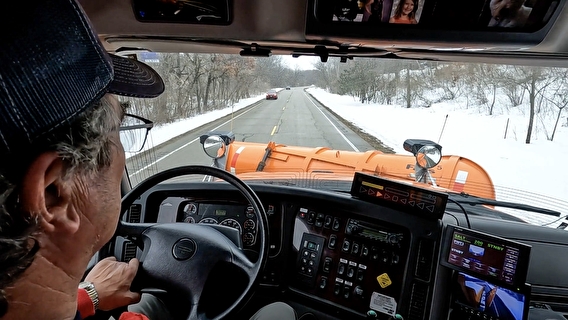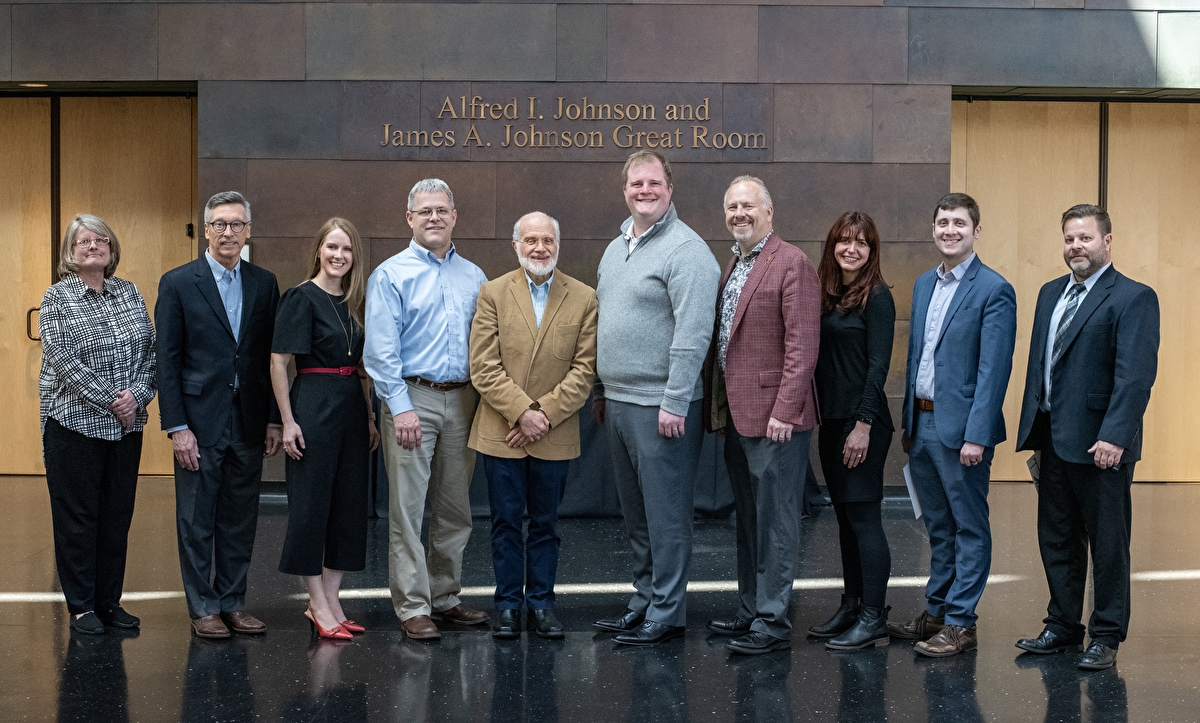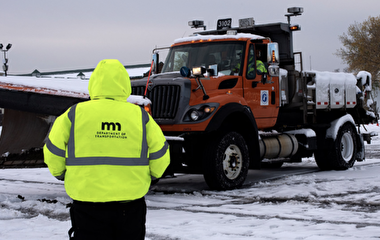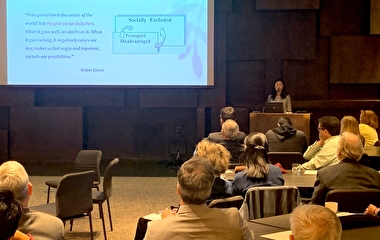
During harsh winter weather, snowplow drivers must work in the low-visibility conditions that keep other people off the road. These conditions can make it difficult to center the complex vehicles in the lane and avoid obstacles.
For nearly three decades, U of M researchers have worked in the lab and in the field—at times, literally shoulder-to-shoulder with drivers—to develop driver-assist technologies and improve safety and performance. This extensive line of research received this year’s Robert C. Johns Research Partnership Award (RPA) from CTS.
Professor Max Donath of the Department of Mechanical Engineering (ME) has shepherded the research, which included contributions from many ME researchers and students. The system was developed and refined under multiple research projects funded by MnDOT along with other sponsors and partners, such as the Minnesota Local Road Research Board.
Leveraging evolving GPS, radar, and related technologies, the system helps drivers with navigation and alerts them to potential hazards ahead. A display mounted to the dashboard has simple icons to show the truck’s lateral foot-by-foot position within the lane. “Operator feedback has been positive, showing that the system provides useful support,” Donath says.
Researched on roads from Minnesota to Alaska, the driver-assist system is used today in MnDOT and Dakota County fleets even as it is being further tested and refined for adoption throughout the state.
A current project nearing completion focused on a two-phase deployment of the system over two winter seasons. In the first phase, team members integrated and tested the lane guidance and forward-obstacle detection systems and conducted user testing of the display design under different ambient lighting conditions. The Phase 1 system was deployed on three MnDOT snowplows across Minnesota and one Dakota County plow for use during the 2020–2021 winter season. Driver feedback about the system’s performance was collected through usability testing.
In the second phase, the system’s display was redesigned and deployed on eight MnDOT plows and one Dakota County plow to incorporate feedback from the Phase 1 winter season. Changes included replacing the old display with a new LCD panel, redesigning the display to make it easier for the driver to understand, and improving the performance of the forward-obstacle detection system. The system was deployed during the 2021–2022 winter season and driver feedback was again collected through usability testing. Co-investigators were Brian Davis, Chen-Fu Liao, and Nichole Morris, with the work funded by MnDOT and a contribution from Dakota County.
Watch a video featuring the Snowplow Driver-Assist System
MnDOT’s Shakopee Truck Station was the first to use the equipment and provide feedback to the U team. “One of the first things drivers noticed was that during the day, the lighting system worked great, but at two o’clock in the morning it was way too bright,” says Tim Murphy, the station’s assistant supervisor. Based on the feedback, researchers added a dimmer switch that lets drivers adjust the light intensity. Researchers also made the display smaller so drivers could check the display moving their eyes only.
One example of the system in action occurred during a storm this past January that produced 50 mph winds and whiteout conditions. “We have pulled trucks off the road temporarily during a shift—drivers are told to pull over if they can’t see,” Murphy says. “But these guys have learned to rely on the system, so when it’s up and running, they say ‘No, I’m just watching the bars according to the U of M machinery.’”
The system helps drivers do their job while making driving less stressful. “I would recommend the system for other drivers and truck stations,” Murphy says.

The next project, again sponsored by MnDOT, is already underway. “We want to build on the success of the system and begin to transition from a research focus to a production focus by preparing the system for a sustainable and scalable long-term, wide-scale deployment,” says Davis, associate director of the Mobility Technology Lab and the principal investigator. Donath and Morris are co-investigators.
Researchers will implement system improvements to support the transition. Additionally, they will engage potential commercial partners to explore opportunities for wider deployment of the system. The project also provides for the support and maintenance of the nine currently deployed systems across Minnesota to ensure they remain functional.
The Research Partnership Award is named in honor of former CTS director Robert Johns. The award is presented annually to a team of individuals who have collaboratively drawn on their diverse expertise to achieve significant impacts on transportation.
“The RPA celebrates collaboration between team members, and that's definitely a feature of this work, particularly Max’s longtime, close partnership with MnDOT on developing, testing, and improving this technology,” says Beth Andrews, CTS research administration manager. “A few members of the winning project team are snowplow operators—a cool connection between researchers and actual users of the technology, which you don't always see.”
Project team
University of Minnesota: Max Donath, Nate Davies, Brian Davis, Annette Fritze, Chen-Fu Liao (now with the Virginia DOT), Nichole Morris, Gordon Parikh (now with SRF Consulting), Katelyn Schwieters
Dakota County: Kevin Schlangen
MnDOT: Nathan Anderson, James Bogardt, Jed Falgren, Chase Fester, Cory Johnson, Sue Lodahl, Tim Murphy, Daniel Rowe, Michael Simon, Bruce Thompson
Writer: Pam Snopl


